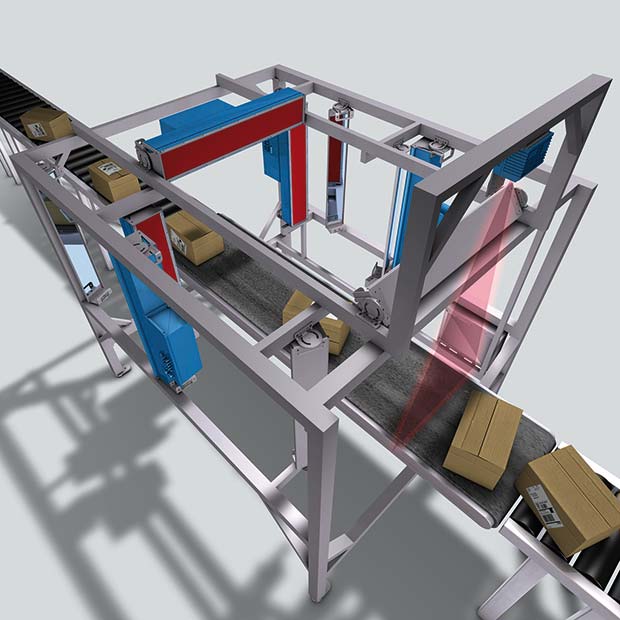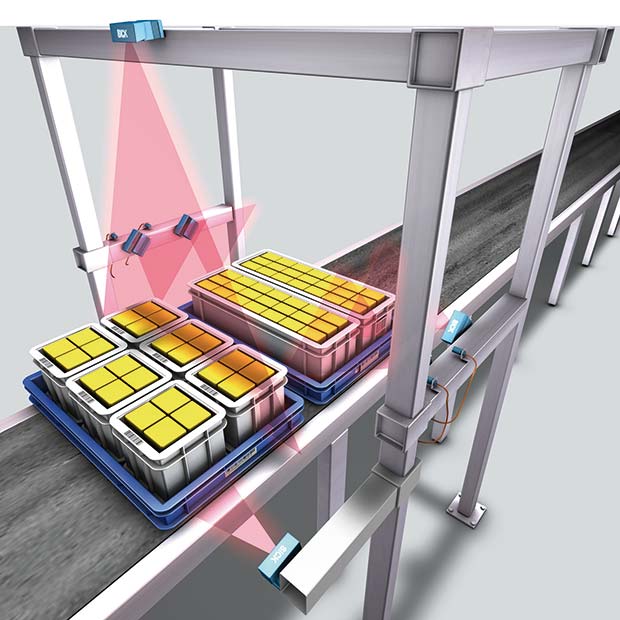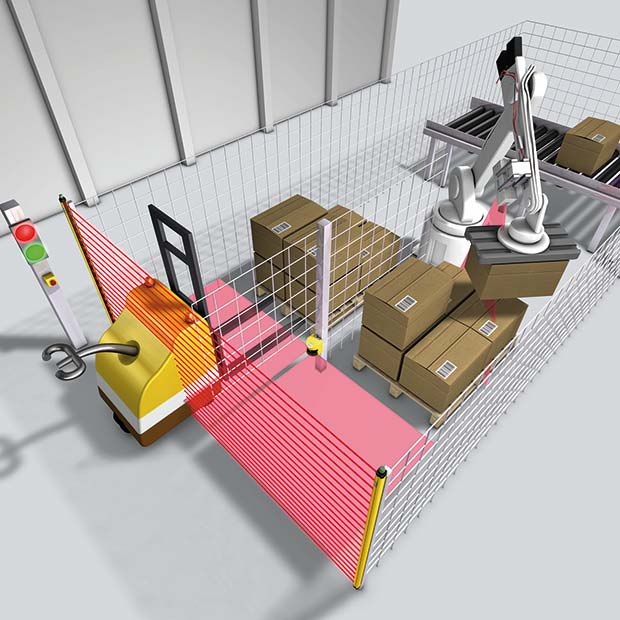By Mark Harris SICK’s UK Product Manager for Auto Identification looks forward to the PPMA Show.
At this year’s PPMA show, product specialists from SICK UK will be sharing a vision of Industry 4.0 and how sensors and systems can empower materials handling, warehousing and logistics operators to become more flexible, productive and profitable in future.

vision-based scanning system: Items are
automatically identified, weighed and
dimensioned to maximise throughout in
high-speed receiving areas.
However, you won’t see a crystal ball on our stand: Industry 4.0 is an evolution rather than a revolution. Industry 4.0-ready technologies are many, varied and already offer practical and tangible benefits right now. That’s why it’s so important to be fully informed about the trends and implications, so you can make the right choices for your current operations, as well as be ready for changes to come.
A need to know basis…?
SICK sensors, auto-identification systems and machinery safety protection are everywhere in warehousing and logistics environments; they are the ‘allseeing eyes’ that give machines and wider networks the information they need to work to optimum productivity.
Every second, SICK sensors deliver a wealth of data to our warehousing and logistics customers all over the world. However, until, recently the ability to fully-exploit all that wealth has been limited by the data being, as it were, ‘trapped’ at a local processing level.
Every smooth-running logistics operation needs reliable identification of goods using 1D and2D barcode scanners right through RFID systems. SICK sensing technology enables simple detection of the presence of products, it measures distances and volumes, checks the quality and integrity of products, packaging and parcels, and enables accurate positioning of transportation systems such as high-bay stackers. Then safety systems, from laser scanners on AGVS to safety light curtains on palletising systems protect personnel while allow processes to continue safely with minimal interruptions.

SICK CLV bar code scanners triggered by
SICK proximity sensors. Data is transmitted
and recorded in the warehouse management
system.
Eyes and ears…
Industry 4.0 is all about unlocking and sharing all this information. If sensors already had eyes, now they have been given a voice and the ability to hear – in the form of the IO-Link communications gateway. They have also been given intelligence, through embedded processing capability to monitor, respond and perform more complex tasks at the machine level. Immediately you can see the benefits for improved tracking and traceability because much more can be recorded and shared about the location and condition of every product or parcel.
On-board sensor intelligence combines with better connectivity to enable sensors to trigger actions based on what they ‘see’. As a result, automated systems can decide for themselves on appropriate changes or responses. So, for example, when a product line changes on a conveyor, the change is identified automatically and machine settings are altered automatically, thus enabling smaller batch sizes to be accommodated. In fact, machines and software can be integrated to complete all sorts of more intelligent manufacturing systems that combine and share information.
Predictive Maintenance
Industry 4.0 holds particular promise in the field of condition monitoring and, therefore, predictive maintenance. Instead of the false economy of “if it ain’t broke don’t fix it”, production lines are increasingly developing more robust approaches that can minimise resourceintensive reactive responses and eliminate breakdowns as well as reducing the time taken for planned outages.
With the control system fully connected to “see” the sensor, you have access to a range of diagnostic capabilities that were not available previously. Is the sensor about to reach the end of its life? Does it need cleaning? Will it last until the next production changeover?
Through sensor self-diagnosis, both during set-up and ongoing operation, and full transparency, failures can be prevented before they happen and sensor diagnostics can be integrated into flexible, needs-based maintenance plans.
By continually monitoring process flow, faults can be displayed, located and detected quickly. If problems do arise, the cause can be easily determined with easyto- use visualisation tools, either on the sensor itself or via an HMI, so machine downtime is minimised.

deliver pallets for unloading. A SICK S3000
safety laser scanner and C4000 light curtain
provide guarding as cartons are removed and
placed onto conveyors. An IVC 3D camera
profiles the pallet load.
Service
When optimally integrated and maintained, SICK sensors and systems are the foundation for consistently safe processes, high product quality and optimum machine availability. Diagnostic data also provides the starting point for SICK’s service offerings to customers. Tailor-made interventions and service contracts are arranged with customers to assess systems, provide ongoing preventative maintenance and system optimisation.
Visit SICK UK on stand no: A26 at the PPMA Show.
SICK




Comments are closed.